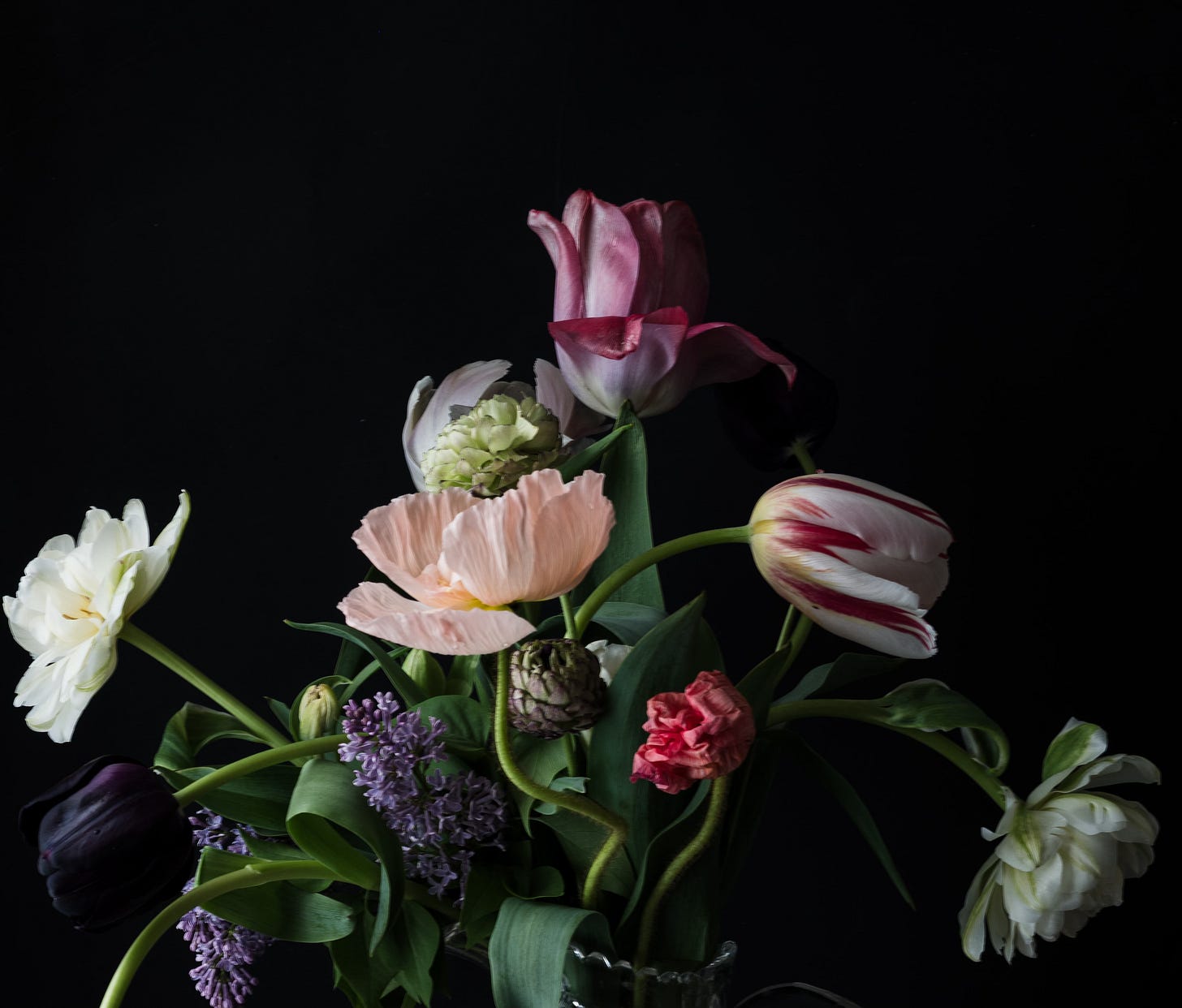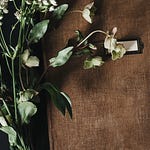I recently visited the Toledo Museum of Art to see the Rachel Ruysch exhibition and was utterly enchanted. I've admired her work before, but standing in front of those paintings felt different—like being pulled into another world. The detail, the movement, and how she captured light were pure magic.
Ruysch lived and worked in the late 1600s and early 1700s, when women were mostly excluded from the professional art world. But she didn't just find a way in—she became one of the most sought-after still life painters of her time. Her father was a botanist, and that early exposure to scientific observation is all over her work. But the science never takes over—her compositions feel intimate, even poetic.
One detail I kept coming back to was the white tulip with red stripes, a flower Ruysch painted often. In her compositions, it doesn’t always sit at the center but always stands out to me. There’s something about how she paints it, the tulip is tilted, turning, catching the light just so. She gives it a sense of movement, almost as if it’s dancing. Even surrounded by abundance, that tulip feels intentional, like a quiet gesture that holds the whole scene in motion.
I’ve always been inspired by the Dutch Masters, and Rachel Ruysch. That admiration has only deepened since seeing her work in person. It goes without saying, I left the exhibition feeling renewed and energized.
I’ve been thinking a lot about what I can learn from her. I don’t want to paint detailed florals like she did, but I’m drawn to how she sees. The way she captures light in her brush strokes, structures her compositions, and communicates through color, value, and depth — It’s masterful.
These are the elements I’m exploring now by creating still life setups of my own and photographing them with intention. I’m not aiming to replicate Ruysch’s style, but to study how she worked with light, structure, and quiet drama. Arranging flowers, adjusting the light, and watching how shadow and shapes interact has become a way of learning through doing. I can only imagine her hours with each specimen, observing it closely, absorbing its form and character, and translating it into something lasting and alive.
I’m curious to see where this work leads as I head into summer. I’ve always had a tendency to jump between ideas, but something about constructing these still life compositions and observing the light feels especially grounding and exciting.
There’s a quiet satisfaction in the process, slowing down and paying attention. I may find ways to eventually weave my drawings and paintings into the project, but I’m trying not to overcomplicate my creative process. For now, I’m staying open. Letting it evolve. Giving it time to become what it’s meant to be.
My obsession with tulips shows no signs of fading.
Until next time…
love, Renée
P.S. In case you’re wondering about the flowers in the photographs: all the tulips—including the red-striped ones—are from my garden. The ranunculus, anemones, and poppies came from local flower farmers.











Share this post